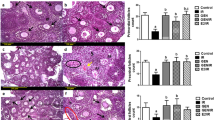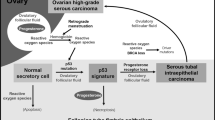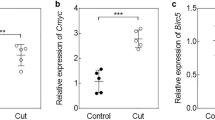Abstract
Groups of immature and mature mice were treated once with DMBA by oral or intraperitoneal route, and the subsequent bilateral sequence of ovarian changes leading to the development of unilateral granulosa cell tumour was studied.
Early post-treatment changes included disappearance of oocytes and follicles as well as increase of the stroma mass. The neoplastic development was closely correlated to the rate of oocyte disappearance. The faster oocytes were eliminated, the earlier tumours appeared. The early post-treatment changes led to a stage of potential preneoplasia, characterized by diffuse luteinization of the ovarian parenchyma. In some preneoplastic ovaries the luteinized tissue underwent neoplastic transformation and developed into invasive luteoma. In other preneoplastic ovaries foci of granulosa-like tumour cells appeared in the luteinized tissue, representing the stage of microscopic granulosa cell tumour. However, such microtumours could also develop within pre-existing luteomata. Autoradiography after injection of thymidine-3H suggested that the granulosa-like tumour cells developed as the result of undifferentiated proliferation of luteinized cells.
So far the pathological ovarian evolution occurred bilaterally as well as unilaterally. However, when a microscopic granulosa cell tumour by further growth became a macroscopic granulosa cell tumour the contralateral ovary invariably atrophied. This ultimate unilateral development coincided with a continuous production of oestrogen by the granulosa cell tumour. The reason for the contralateral atrophy is discussed in relation to the influence of the hormonal balance on ovarian tumorigenesis.
This is a preview of subscription content, access via your institution
Access options
Subscribe to this journal
Receive 24 print issues and online access
$259.00 per year
only $10.79 per issue
Buy this article
- Purchase on Springer Link
- Instant access to full article PDF
Prices may be subject to local taxes which are calculated during checkout
Similar content being viewed by others
Rights and permissions
About this article
Cite this article
Krarup, T. Effect of 9,10-Dimethyl-1,2-Benzanthracene on the Mouse Ovary. Ovarian Tumorigenesis. Br J Cancer 24, 168–186 (1970). https://doi.org/10.1038/bjc.1970.20
Issue Date:
DOI: https://doi.org/10.1038/bjc.1970.20
This article is cited by
-
Androgen Resistance in Female Mice Increases Susceptibility to DMBA-Induced Mammary Tumors
Hormones and Cancer (2012)



